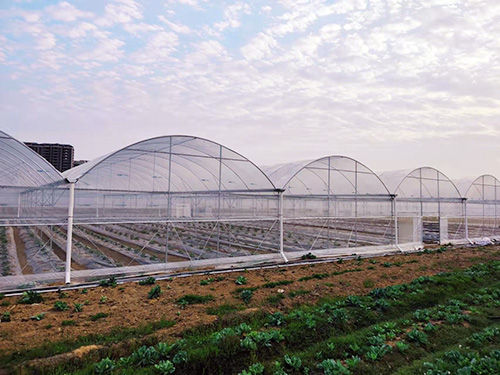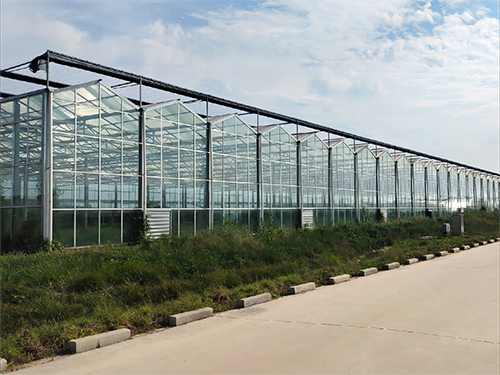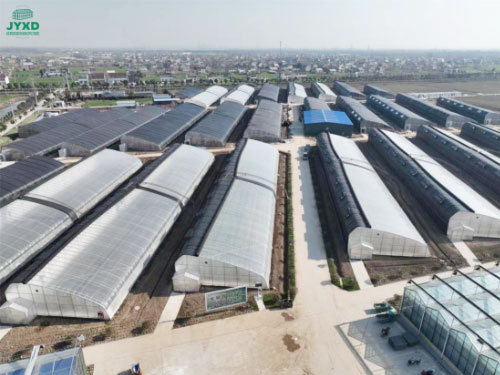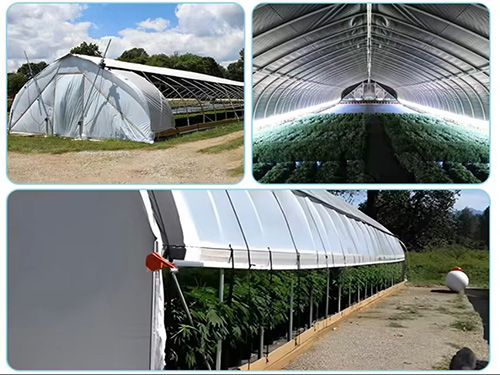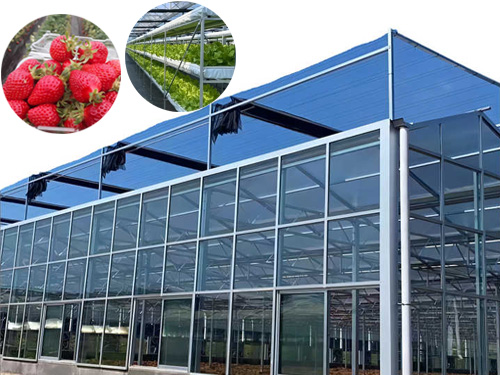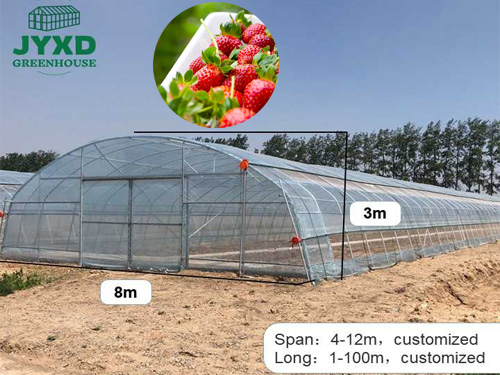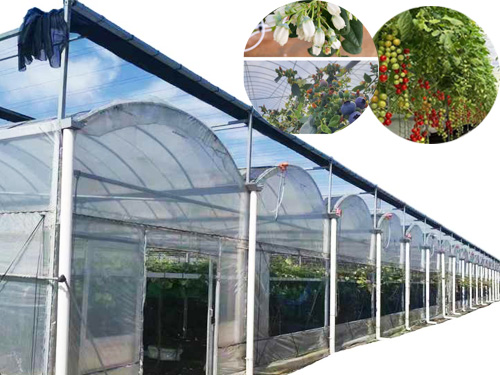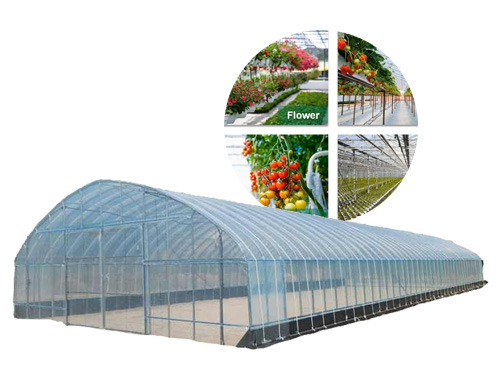NEWS DETAILS
NEWS INFORMATION
How to choose a greenhouse according to the actual situation
AUTHOR:jyxd-greenhouse DATE:2024-06-09 18:42:35 HITS:145
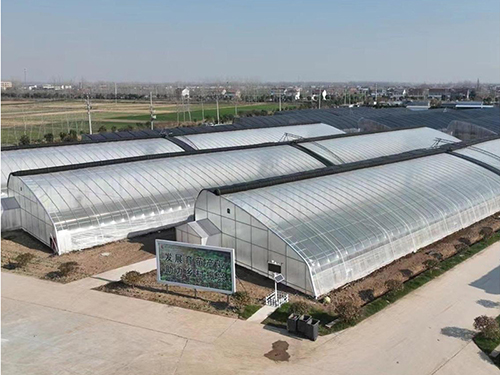
I. Introduction
In modern agriculture, greenhouse as an important tool to increase crop yield and extend the production cycle, its choice becomes particularly important. However, not all greenhouses are suitable for all environments and crops. Therefore, understanding how to choose a greenhouse according to the actual situation is crucial to improving agricultural production efficiency and economic benefits.
II. Considering geographical location and climatic conditions
1. Requirements of different regional climatic characteristics for greenhouses
When choosing a greenhouse, the first thing to consider is the geographical location and climatic conditions. In cold regions, attention should be paid to the insulation performance to ensure that the crops can grow normally in winter; while in hot regions, ventilation and heat dissipation need to be considered to avoid damage to the crops due to high temperature.
2. The influence of lighting conditions on the structure of the greenhouse
Light is one of the key factors for crop growth. When choosing a greenhouse, it is necessary to consider the local lighting conditions. If there is insufficient light, it may be necessary to choose a greenhouse material with better light transmittance; and if the light is too strong, it is necessary to consider installing sunshade facilities to avoid burns to the crops.
III. Types and needs of planted crops
1. Special requirements for temperature, humidity and light of different vegetables
Different crops have different requirements for environmental factors such as temperature, humidity and light. For example, some vegetables require higher temperatures and humidity to grow normally, while others are more adapted to low-temperature environments. Therefore, when choosing a greenhouse, it is necessary to choose the suitable greenhouse type according to the characteristics of the planted crops.
2. Specific standards of greenhouse environment for high value-added crops
For high value-added crops such as flowers and medicinal materials, their requirements for the greenhouse environment are more strict. These crops often require specific temperature, humidity and light conditions to maintain the best growth state. Therefore, when choosing a greenhouse, special attention needs to be paid to these special requirements.
IV. Capital budget and cost considerations
1. Cost differences of different types of greenhouses
The cost of greenhouses varies due to factors such as materials, structure and scale. When choosing a greenhouse, it is necessary to choose the suitable greenhouse type according to one's own capital budget. Generally speaking, the cost of glass greenhouses is relatively high, but the insulation and light transmittance performance is better; the cost of plastic film greenhouses is lower, but the service life is relatively short.
2. Evaluation of long-term operating costs
In addition to the initial investment cost, it is also necessary to consider the long-term operating cost of the greenhouse, including electricity bills, water bills, labor costs, etc. When choosing a greenhouse, these factors need to be comprehensively considered to ensure that the operating cost of the greenhouse is within the affordable range.
V. Land area and layout
1. Choosing the appropriate greenhouse scale according to the land size
The land area is an important basis for choosing the scale of the greenhouse. When choosing a greenhouse, it is necessary to determine the scale and quantity of the greenhouse according to the land size. If the land area is small, a smaller-scale greenhouse can be selected; if the land area is large, it is possible to consider building multiple greenhouses or choosing a larger-scale greenhouse.
2. Limitations of land shape on greenhouse planning
The land shape will also have an impact on the planning of the greenhouse. When choosing a greenhouse, it is necessary to consider the shape and topographical characteristics of the land to ensure that the layout of the greenhouse is reasonable and the utilization rate is high.
VI. Understanding the basic types of greenhouses
● Glass greenhouse: Good light transmittance and strong insulation, but the cost is relatively high; suitable for crop cultivation that requires high-precision environmental control.
● Plastic film greenhouse: Low cost and easy to build, but the service life is relatively short; suitable for short-term or seasonal crop cultivation.
● Rigid plate greenhouse: Stable structure and long service life, but the light transmittance is relatively poor; suitable for crop cultivation that requires long-term use.
● Other new greenhouse materials and technologies: Such as intelligent greenhouses, ecological greenhouses, etc., have higher automation and environmental protection performance.
VII. Later management and maintenance of greenhouses
● Greenhouse environment regulation: Including the regulation of environmental factors such as temperature, humidity and light. It is necessary to adjust the greenhouse environment in time according to the growth needs of the crops and the external environmental conditions.
● Pest and disease prevention and control: Adopt a strategy of prevention first and scientific prevention and control to ensure the healthy growth of the crops.
● Crop growth management: Including scientific fertilization, watering, pruning and other management measures to promote the healthy growth of the crops.
● Maintenance and repair of greenhouse facilities: Regularly inspect and repair greenhouse facilities and equipment to ensure the normal operation and extended service life of the greenhouse.
VIII. Conclusion
To sum up, choosing the right greenhouse is the key to improving agricultural production efficiency and economic benefits. When choosing a greenhouse, it is necessary to comprehensively consider factors such as geographical location, climatic conditions, crop types, capital budget, land area and greenhouse type. At the same time, it is also necessary to pay attention to the later management and maintenance of the greenhouse to ensure that the greenhouse can operate stably for a long time and exert the greatest benefits. Encourage agricultural practitioners to choose the greenhouse type that suits them according to the actual situation and promote the development of modern agriculture.
Our company is a professional manufacturer of greenhouse sheds and can provide you with one-stop service. If you have a need, you can feel free to contact us and look forward to cooperating with you!
Hebei Juyou Xinda Greenhouse Facilities Co.,Ltd.
Copyright © 2024-2025 https://www.jyxd-greenhouse.com. All Rights Reserved Hebei Juyou Xinda Greenhouse Facilities Co.,Ltd.Copyright





 Current Location:
Current Location: